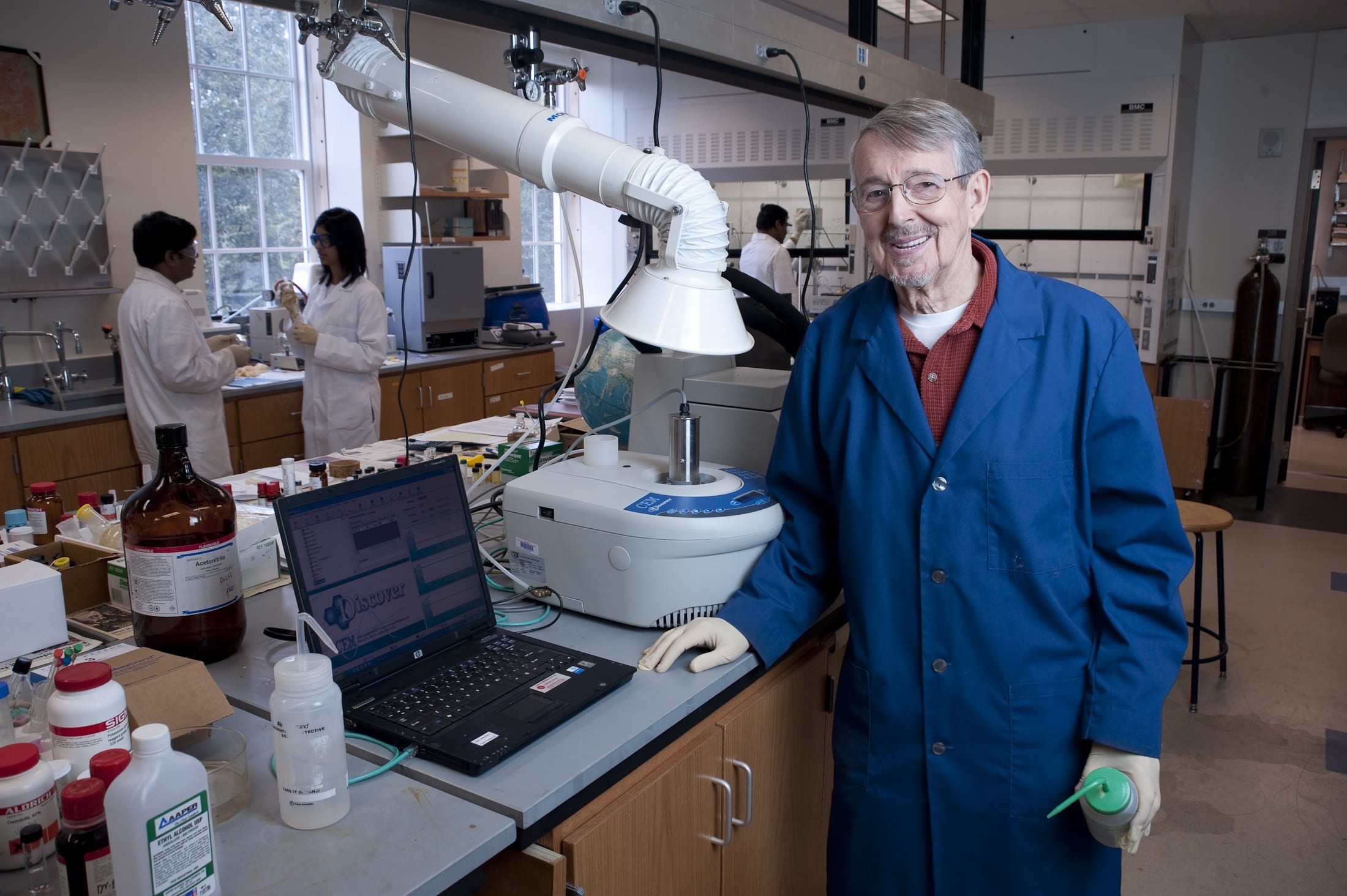Researchers at Southern Methodist University and The University of Texas at Dallas have identified a group of chemical compounds that slows the degeneration of neurons, a condition that causes such common diseases of old age as Alzheimer’s, Parkinson’s and amyotropic lateral sclerosis.
SMU Chemistry Professor Edward R. Biehl and UTD Biology Professor Santosh R. D’Mello teamed to test 45 chemical compounds. Four were found to be the most potent protectors of brain cells, or neurons.

Their findings were published in the November 2008 issue of “Experimental Biology and Medicine.”
The synthesized chemicals, called “substituted indolin-2-one compounds,” are derivatives of another compound called GW5074 that was shown to prevent neurodegeneration in a past report published by the D’Mello lab.
While effective at protecting neurons from decay or death, GW5074 is toxic to cells at slightly elevated doses, which makes it unsuitable for clinical testing in patients. The newly identified, second generation compounds maintain the protective feature of GW5074 but are not toxic, even at very high doses, and hold promise in halting the steady march of neurodegenerative diseases like Alzheimer’s and Parkinson’s.
“Sadly, neurodegenerative diseases are a challenge for our elderly population,” D’Mello said. “People are living longer and are more impacted by diseases like Alzheimer’s, Parkinson’s and Amyotrophic Lateral Sclerosis than ever before, which means we need to aggressively look for drugs that treat diseases. But most exciting now are our efforts to stop the effects of brain disease right in its tracks. Although the newly discovered compounds have only been tested in cultured neurons and mice, they do offer hope.”
The most common cause of neurodegenerative disease is aging. Current medications only alleviate the symptoms but do not affect the underlying cause, which is degeneration of neurons. The identification of compounds that inhibit neuronal death is thus of urgent and critical importance.
The new compounds may offer doctors an option beyond just treating the symptoms of neurodegenerative diseases. The development isn’t a cure, but doctors may be able to one day use compounds that stop cell death in combination with currently existing drugs that battle the symptoms of brain diseases. The combination of stopping the disease in its tracks while treating disease symptoms can offer hope to people suffering and the families impacted by these diseases.
Related links:
Edward Biehl
Santosh D’Mello
SMU Department of Chemistry
Dedman College of Humanities and Sciences
 The SMU team is working with renowned UTSW epidemiologist
The SMU team is working with renowned UTSW epidemiologist  Persian Gulf War veterans from across the country are being tested at UTSW using a type of brain imaging called functional Magnetic Resonance Imaging, or fMRI.
Persian Gulf War veterans from across the country are being tested at UTSW using a type of brain imaging called functional Magnetic Resonance Imaging, or fMRI. The SMU team’s primary challenge is in identifying differences in brain activation from locations deep within the brain using measured brain signals that are weak and vary from location to location.
The SMU team’s primary challenge is in identifying differences in brain activation from locations deep within the brain using measured brain signals that are weak and vary from location to location. Since Stice conducted the first trial in 1998, more than 1,000 high school and college women, including 62 SMU students, have completed the program, including a research trial led by SMU Ph.D. students.
Since Stice conducted the first trial in 1998, more than 1,000 high school and college women, including 62 SMU students, have completed the program, including a research trial led by SMU Ph.D. students.
 Southern Methodist University psychology professor
Southern Methodist University psychology professor 
